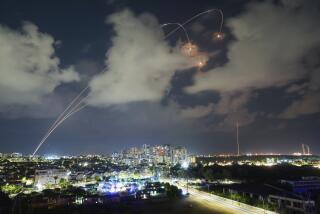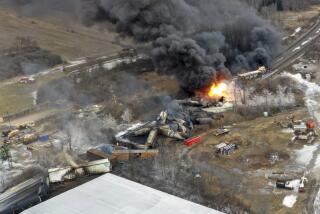‘In Too Deep’ on Weapons
- Share via
Kudos to The Times editorial (“In Too Deep,” Jan. 21) for pointing out the flaws in Sen. Sam Nunn’s (D-Ga.) idea for a defensive shield to protect us against accidental nuclear attack. A limited deployment land-based system employing high-speed interceptor missiles would not only be expensive, but also ineffective against many of the threats that we face.
In 1974 the U.S. deployed the Safeguard Anti-Ballistic Missile system in North Dakota to protect missile fields in the area. In 1976 after spending over $7 billion, we dismantled it because the installation was deemed too costly and ineffective. Nunn would have us travel down that path again, this time deploying interceptors at more than one site, a situation which he believes would require only a “modest amendment” to the ABM Treaty. Yet, such a system would only protect against ballistic missiles, leaving other modes of transport such as aircraft or terrorists to wreak havoc.
Fortunately, there is a quick, simple, and cost effective means of providing genuine protection against accidental launch from all types of weapons. By mutual agreement, the U.S., Soviet Union and the other nuclear powers could install command-destruct devices on all nuclear weapons delivery vehicles. Such devices are routinely used in ballistic missile tests and they were effective in destroying the wayward booster rockets following the Challenger explosion. At a cost of several hundred million dollars at most, the public would be afforded true protection.
As for reducing the threat of terrorist or Third World use of nuclear weapons, the commencement of reductions in the numbers of weapons by the nuclear powers and the commitment to a comprehensive test ban would go a long way toward reducing the incentive for others to “go nuclear.”
STEPHEN SCHWARTZ
Los Angeles
More to Read
Sign up for Essential California
The most important California stories and recommendations in your inbox every morning.
You may occasionally receive promotional content from the Los Angeles Times.













